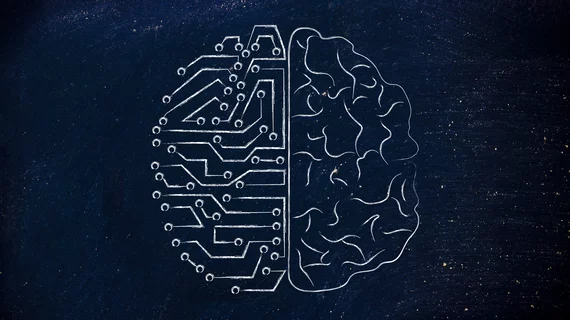Machine learning IDs biomarkers for Alzheimer’s disease
Researchers at the University of Southern California Viterbi School of Engineering have utilized machine learning to detect potential blood-based markers of Alzheimer’s disease. This will allow for earlier diagnosis and could potentially lead to non-invasive methods of tracking the progression of the disease in impacted patients. Findings were published in the journal Frontiers in Aging Neuroscience.
There is wide interest in how machine learning can provide more information into cognitive diseases including Alzheimer’s. Recently, the National Institute on Aging awarded a total of $5 million for two projects that will use AI and big data to better understand Alzheimer’s disease and other dementias.
Led by professor Greg Ver Steeg, PhD, of the USC Information Sciences Institute, the researchers sought to determine whether there could be hidden indicators of Alzheimer’s—namely, factors that are discovered in routine blood tests. Steeg and colleagues used his machine learning method CorEx, which can find patterns in areas that are “overwhelmed by large amounts of data.”
It is possible there is not a single predictor that could determine cognitive decline, if it’s underway, or the severity of it. Still, there may be clusters of indicators that may better detect cognitive decline.
“The question we were looking at was whether we could use the algorithm to find groups of features that could be a better predictor of Alzheimer’s than any factors measured individually,” Steeg said in a prepared statement.
Steeg and colleagues assessed the medical data from more than 800 adults who are part of the Alzheimer’s Disease Neuroimaging Initiative to identify predictors of cognitive decline. The cohort fell into three categories—cognitively normal, mild cognitive impairment and those with Alzheimer’s disease.
The researchers found more than 400 biomarkers that were collected from brain imaging, genetics, plasma and demographics. They found amyloid and tau to be “important.” Additionally, the machine learning showed a “strong relationship” with cardiovascular health, hormones, metabolism and immune system.
“Maybe fixing one of these things alone doesn’t make a huge difference but fixing a cluster of things could be helpful in reducing the risk of developing the disease," Steeg et al. wrote.
Professor and co-researcher Paul Thompson, of the USC Mark and Mary Stevens Neuroimaging and Informatics Institute and the Keck School of Medicine, noted some of the relationships between the measures had been previously established as being associated with Alzheimer’s. Their results show clusters of features could be a stronger predictor of Alzheimer’s, compared to individual features.
The researchers will look to confirm their initial results in a larger cohort and will use CorEx to find hidden factors in mental health diseases including schizophrenia and depression.

